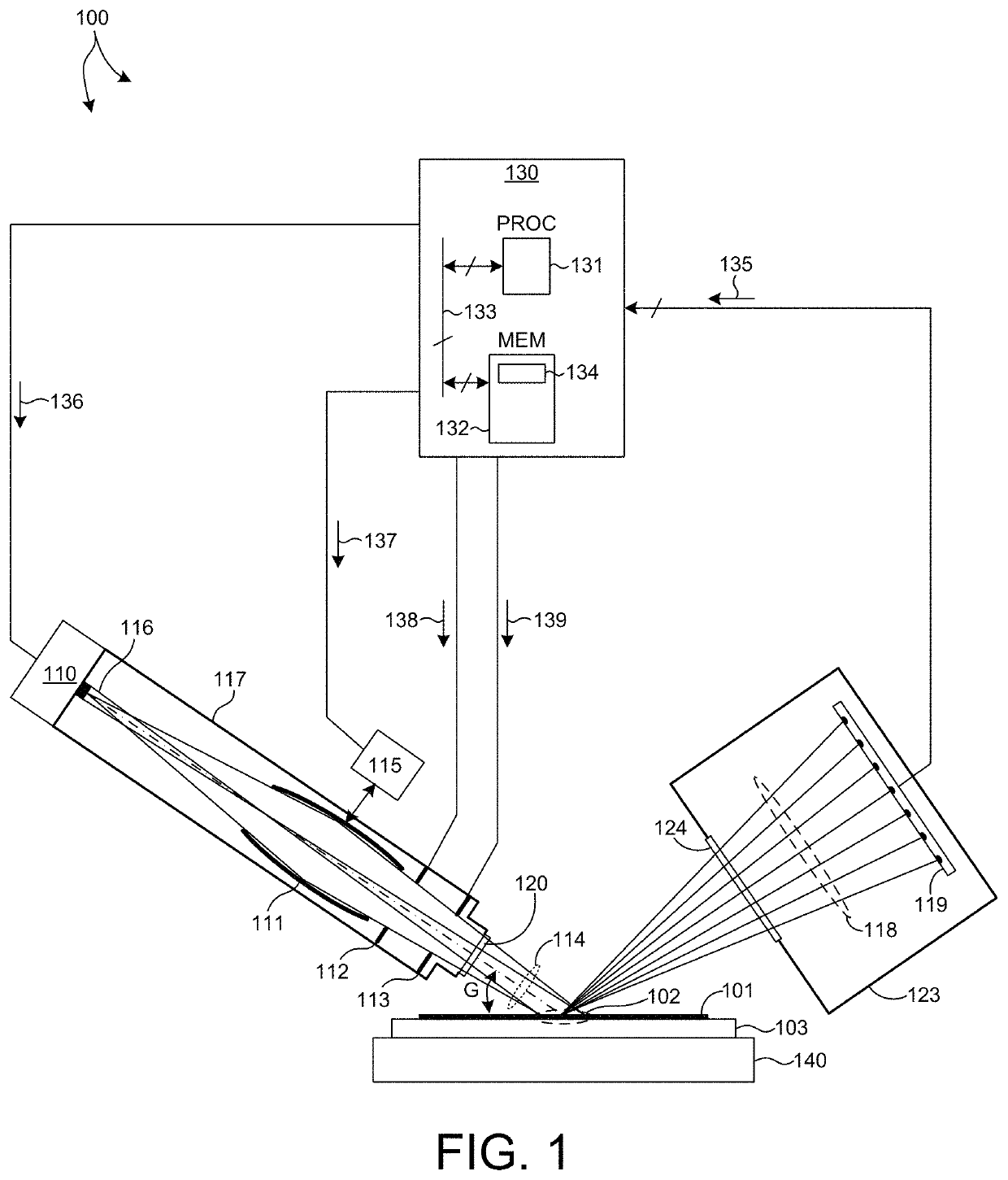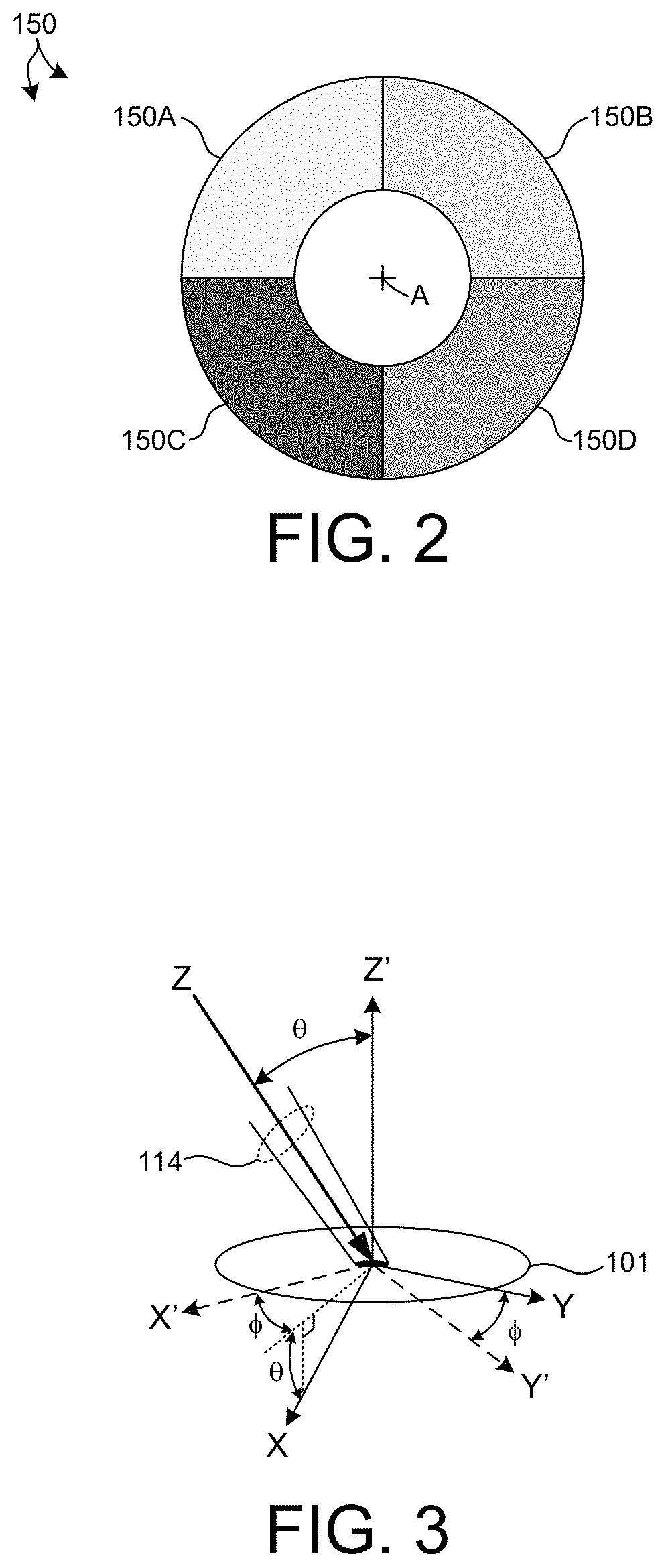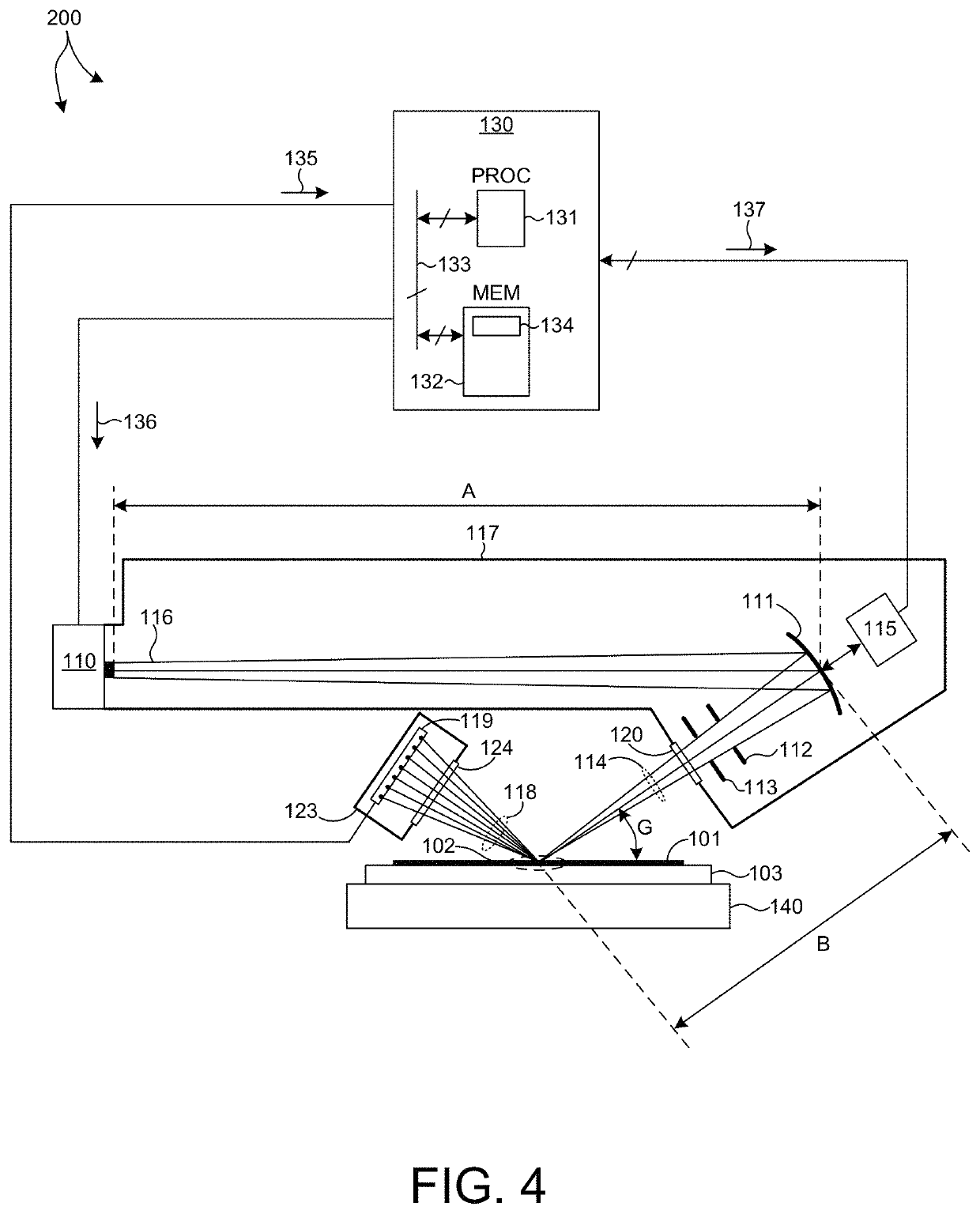Methods and systems for semiconductor metrology based on polychromatic soft X-Ray diffraction
a polychromatic soft x-ray diffraction and metrology technology, applied in semiconductor/solid-state device testing/measurement, material analysis using wave/particle radiation, instruments, etc., can solve the problems of limited information concerning the composition and shape of nanostructures, difficult characterization, and inability to accurately determine the composition of materials, etc., to achieve the effect of improving the measurement throughpu
- Summary
- Abstract
- Description
- Claims
- Application Information
AI Technical Summary
Benefits of technology
Problems solved by technology
Method used
Image
Examples
Embodiment Construction
[0035]Reference will now be made in detail to background examples and some embodiments of the invention, examples of which are illustrated in the accompanying drawings.
[0036]Methods and systems for measuring structural and material characteristics (e.g., material composition, dimensional characteristics of structures and films, etc.) of semiconductor structures associated with different semiconductor fabrication processes based on x-ray illumination are presented. More specifically, methods and systems for performing measurements of semiconductor structures based on high-brightness, polychromatic reflective small angle x-ray scatterometry (RSAXS) metrology are presented herein.
[0037]RSAXS measurements of a semiconductor wafer are performed over a range of wavelengths, angles of incidence, and azimuth angles with a small beam spot size (e.g., less than 50 micrometers across the effective illumination spot). In one aspect, the RSAXS measurements are performed with x-ray radiation in t...
PUM
| Property | Measurement | Unit |
|---|---|---|
| photon energy | aaaaa | aaaaa |
| grazing incidence angle | aaaaa | aaaaa |
| grazing incidence angle | aaaaa | aaaaa |
Abstract
Description
Claims
Application Information
 Login to View More
Login to View More - R&D
- Intellectual Property
- Life Sciences
- Materials
- Tech Scout
- Unparalleled Data Quality
- Higher Quality Content
- 60% Fewer Hallucinations
Browse by: Latest US Patents, China's latest patents, Technical Efficacy Thesaurus, Application Domain, Technology Topic, Popular Technical Reports.
© 2025 PatSnap. All rights reserved.Legal|Privacy policy|Modern Slavery Act Transparency Statement|Sitemap|About US| Contact US: help@patsnap.com



